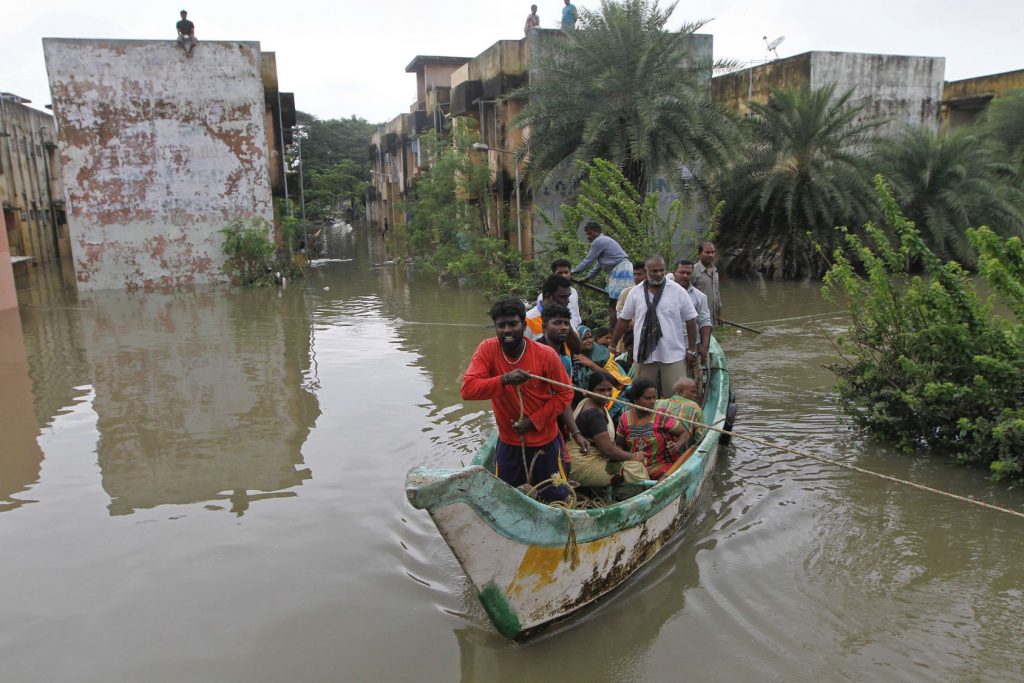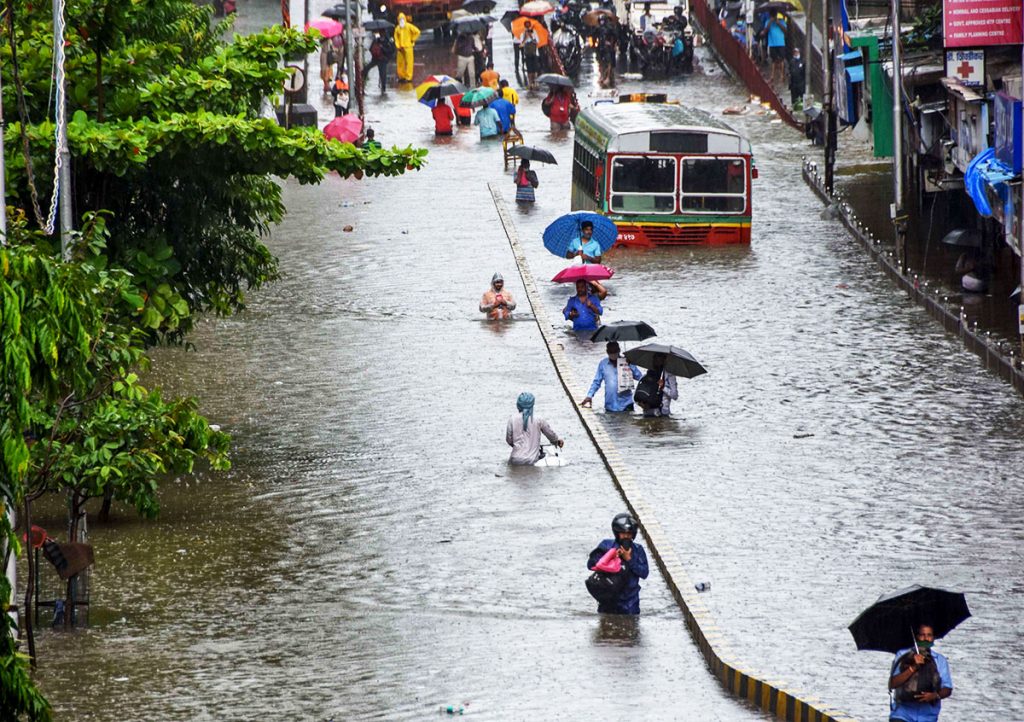“When it rains, it pours”, this idiom has become more relevant for India as the nation is facing recurrent incidences of floods due to ongoing climate change. The monsoon season, which extends from June to September, is celebrated by the agrarian-based Indian economy. Marking the end of summers, the monsoon rain promises good harvest and recharging of water reservoirs apart from the respite from the scorching heat. However, over the years the rains are causing devastating death, destruction and destitution for the cities close to the sea. If global warming continues at the current pace, the country is going to witness a faster melting in the Himalayas causing more floods in the regions on banks of the Ganga and the Brahmaputra rivers.
While climate change is one of the reasons for the heavy destruction due to the floods, poor city planning is exacerbating these effects in the urban regions. Aberrant weather patterns with higher intensity of rains in fewer days are slowing down the otherwise fastpaced metro cities like Mumbai and Delhi. As per the Central Water Commission data, approximately one lakh seven thousand people have lost their lives due to heavy rains and floods across India between 1953 and 2017 and India alone accounts for one-fifth of world’s death due to excessive downpour. Prof. C. Balaji, a Professor at IIT Madras, specializes in weather prediction and impacts of climate change on human life and environmental condition. He holds the view that the study of weather patterns and extreme rainfall events can help understand the causal factors, and predict such extreme events in the future. Such predictions can be used by the policymakers, disaster authorities and they can inform and alert the citizens well in time so that the impact of a disaster can be minimized.
“There is an immediate need to study the changes in the intensity of rainfall in the future due to the repeated extreme rainfall events in recent years (like Kerala and Mumbai floods where rainfalls at never before intensities were seen to occur). The key observation has been the fact that while the cumulative rainfall is more or less the same, rainfall occurs for a fewer number of days, but whenever it rains it pours causing massive flooding, loss of life property, and this creates havoc to the economy and the society in general,” says Prof. C. Balaji while explaining the need to study the rainfall events.



He, along with his team at IIT Madras, has been studying the Chennai floods of 2015 that brought the city to a standstill. On the unfateful day, 1st December 2015, the city received 276 mm of rainfall which constituted 76% of the total expected rainfall in the season. This massive rainfall resulted in floods and water logging across the city, displacing millions of people and costed many lives. To understand what caused this severe downpour, Prof. Balaji’s team at IIT Madras carried out a numerical study on the effect of climate change on the characteristics of this severe rainfall event that occurred in Chennai. To carry out this study, the researchers used an advanced research numerical weather prediction model developed by the National Center for Atmospheric Research, an organization of the USA. This model has been used earlier as well to simulate heavy rainfall events, for predicting tropical cyclone tracks and weather forecasting.

The results of this study have now been published in the journal Current Science. The model projections suggest that warmer climate in the future, owing to higher emission rates, will favor much heavier precipitation than in current times.
“The modelling results suggest that future projecte precipitation in Chennai region can potentially increase by 17.37% on the peak rainy day (1 December 2015) in future compared to current. The key takeaway though is that on the succeeding days, the amount of precipitation is likely to increase dramatically by 183.5%, 233.9% and 70.8%. In addition to the above, the geographical extent of the region receiving extreme rainfall event is likely to get worse and the heavy rain may continue for longer durations of time!,” explains Prof. Balaji.
In future, the team wants to study several other occurrences and their impact on similar extreme events.They also say that the current study considers only one event, and the results suggest increased rainfall and flooding. Prof. Jayaraman Srinivasan, a professor at the Indian Institute of Science also agrees that a lot more work has to be done to unravel the extreme events that may occur in Chennai in the future. The team will now be focusing on several cases during different seasons like pre-monsoon and post-monsoon need to arrive at better conclusions for providing scientifically reliable quantitative responses of extreme rainfall events to climate change for all the stakeholders. One important aspect that researchers are keen to study is the role of oceans in catalyzing these extreme rainfall events. “Since the ocean also plays a big part in these extreme rainfall events, the interaction between atmosphere and ocean may also have to be taken into consideration. This will create new challenges but is likely to throw more light on the actual physics of what really is going on in these events. We hope to come out with more precise conclusions and recommendations in the next three years,” adds Prof. Balaji. Prof. Balaji’s team consisted of P. Jyoteeshkumar and P. V. Kiran from IIT Madras.
Article by Aditi Jain
Here is the link to the research article:
https://www.currentscience.ac.in/Volumes/118/12/1968.pdf











